How Your Lifestyle Plays a Role in Your Health
Filed under "Health"
More articles »
Monday, August 24, 2020
Your lifestyle is one of the biggest factors in good health. What you eat and drink, your stress levels, your exposure to toxins, how much physical activity you get, and your sleep patterns are a just a few of your everyday choices that will have long term implications on your health.
-
First we’ll go a little more in-depth on the the importance of gut health, and how to
maintain a healthy microbiome.
-
I’m going to share the 5R framework for gut restoration, and details on the Auto-Immune
Gut Repair Diet and how it can improve your health.
-
We’ll also look at the two biggest immune disruptors - gluten and dairy, and how they
could be wreaking havoc on your digestive system, brain health, and ability to heal.
Along the way I’m going to share tips and tricks for reading food labels, some common and some not-so-common foods you should be eating regularly, and how to advocate for healthy eating when you dine outside of the home.
You may watch this post as a video here or read post (below these pictures)
Also check out our post on The Secret Power of Foods HERE
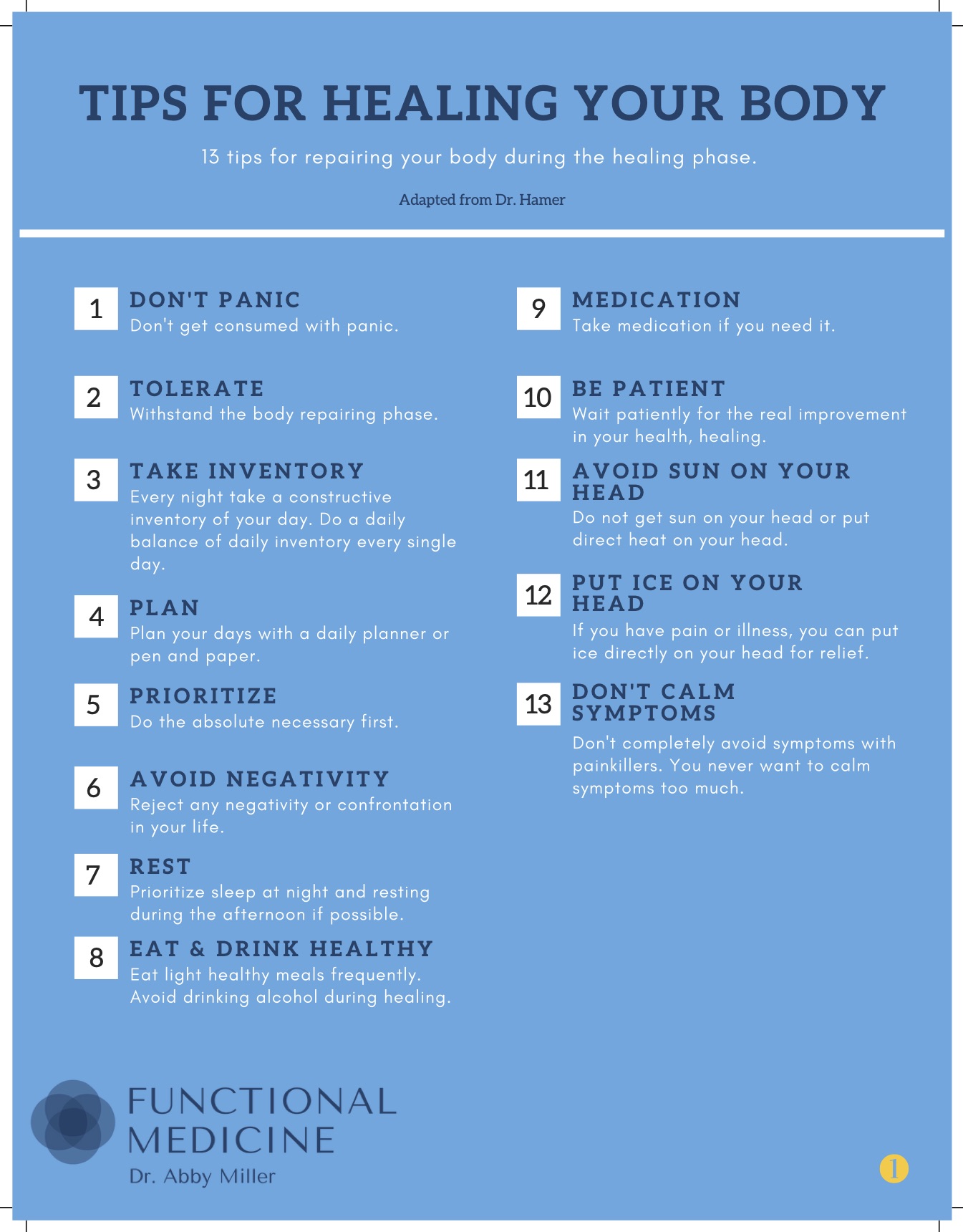
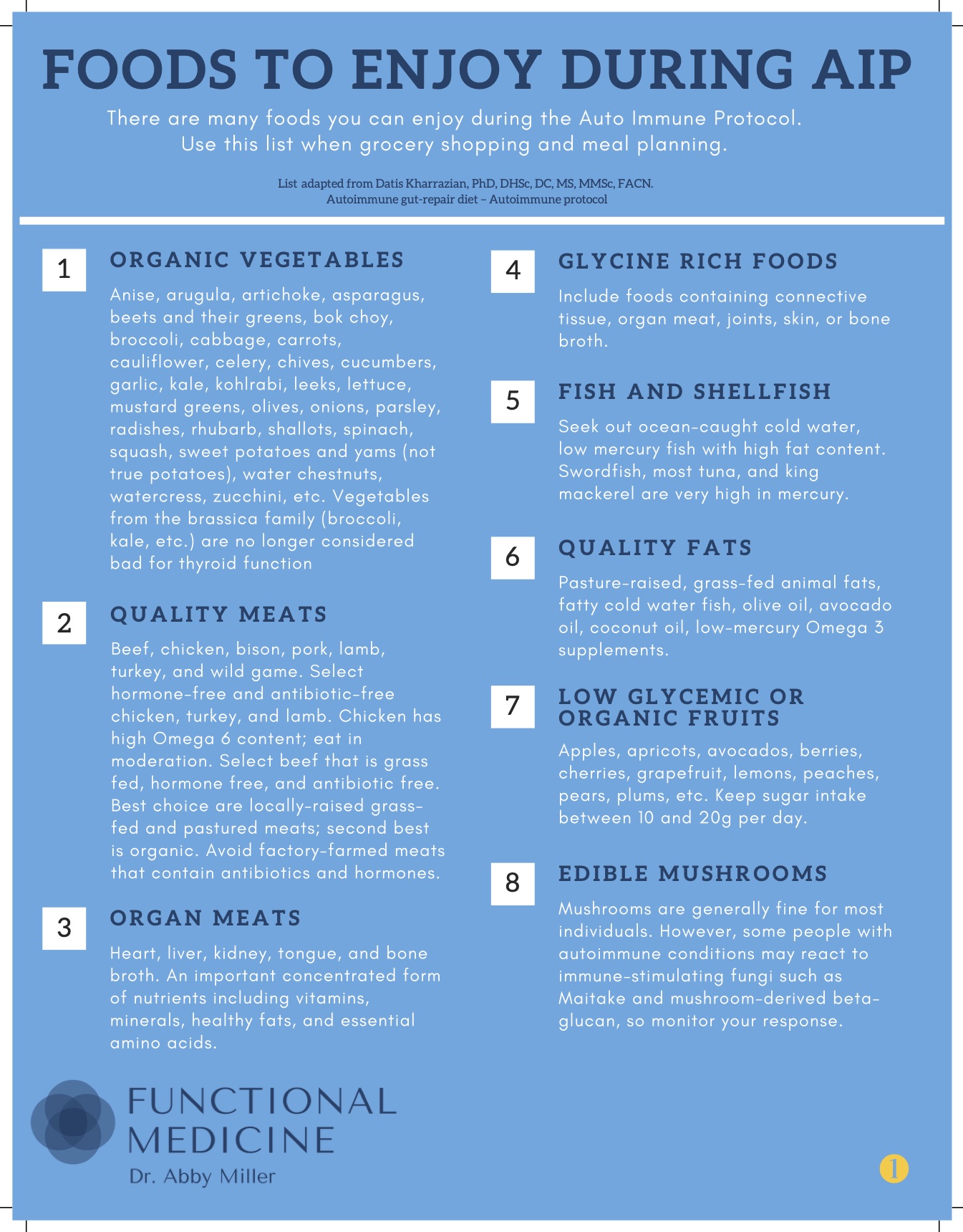

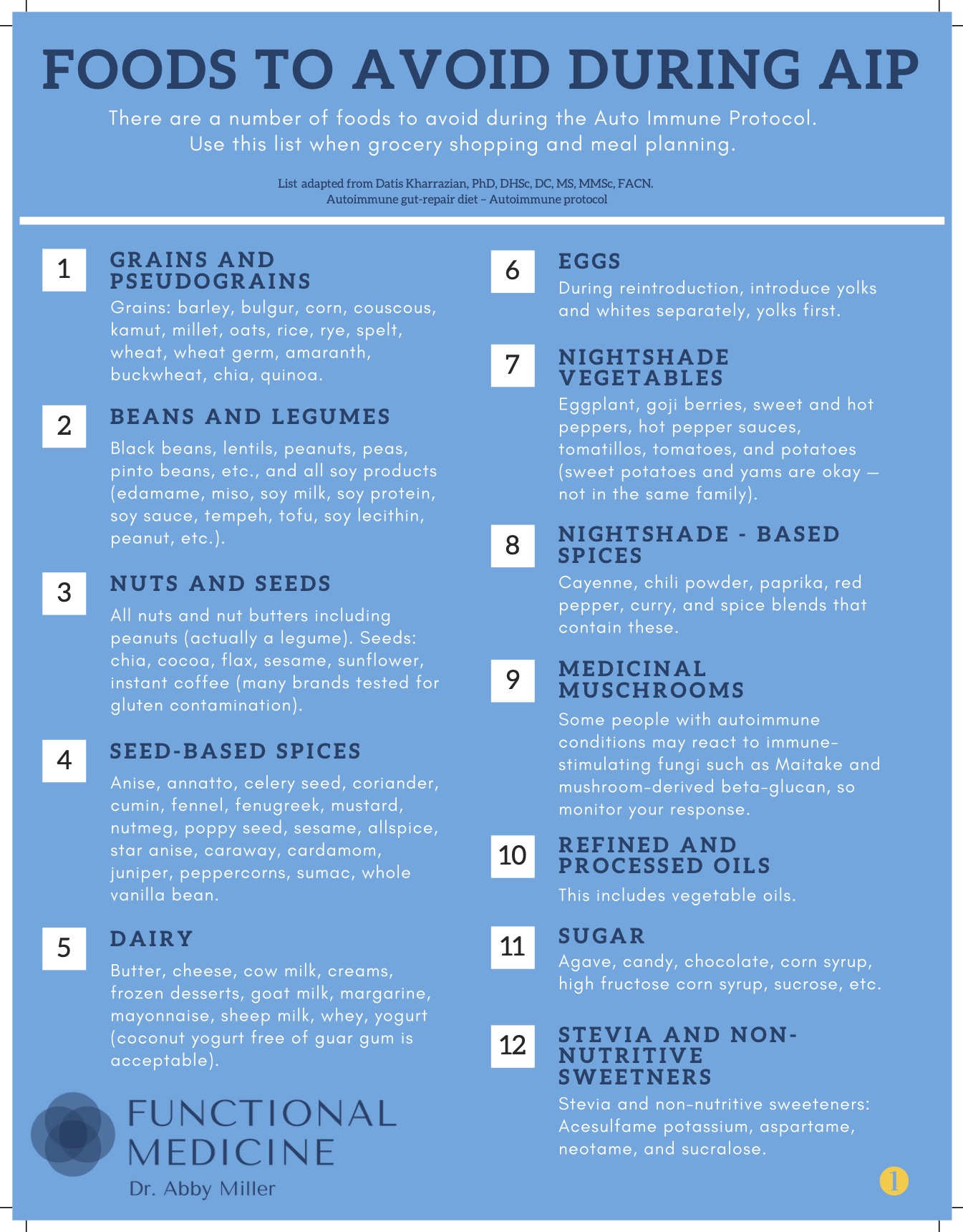
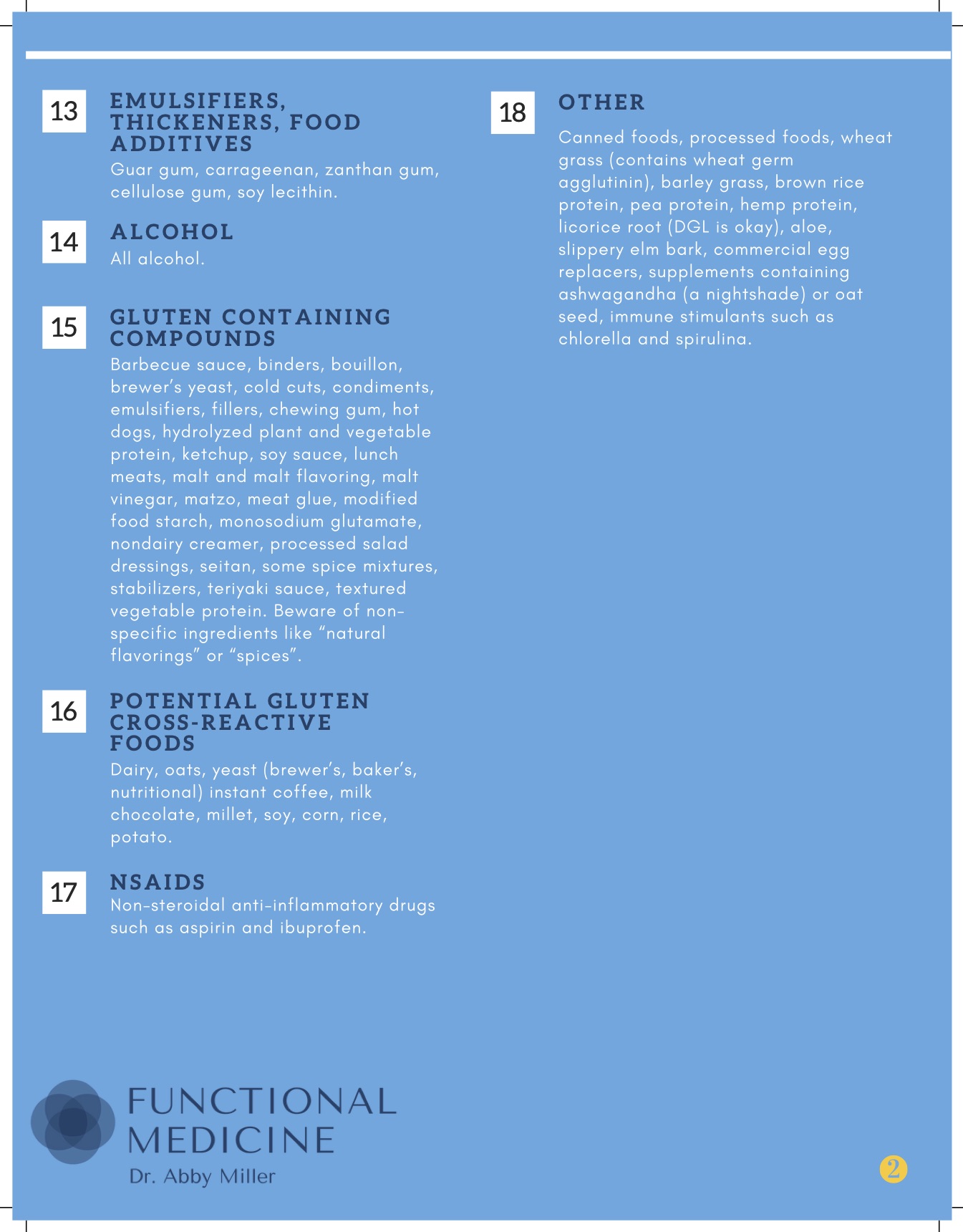
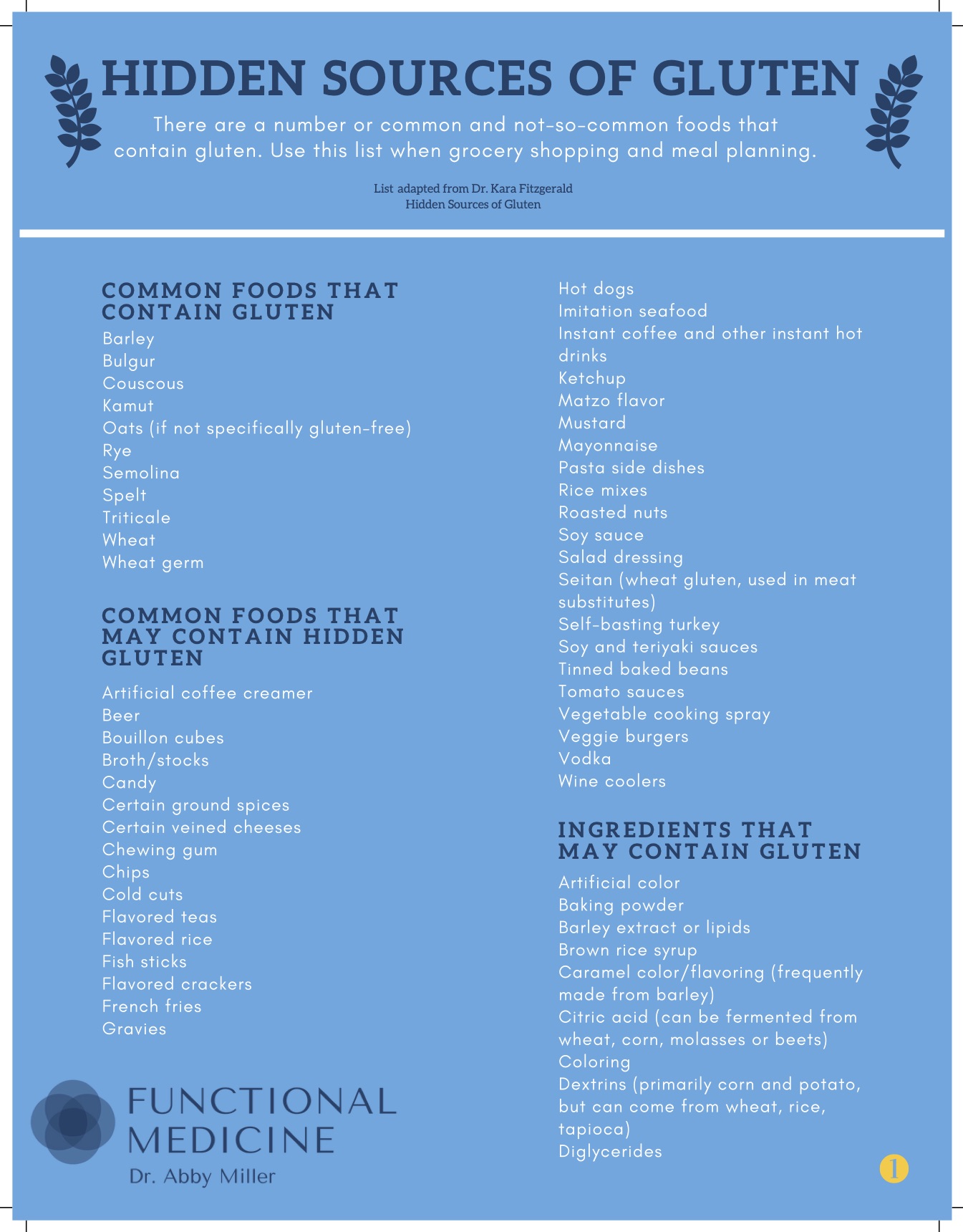
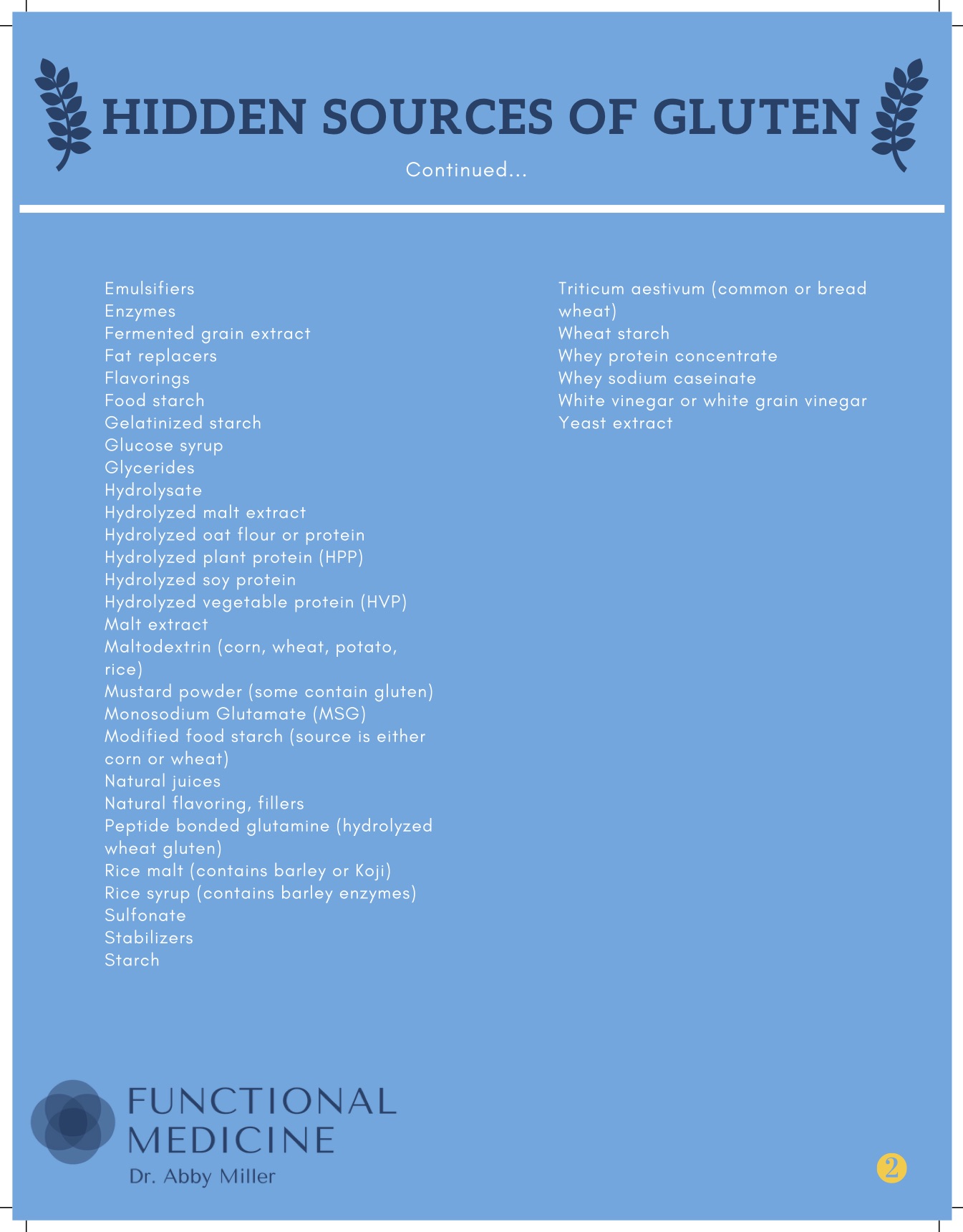
In this lesson, we are going to talk a lot about diet and why a properly functioning digestive system is critical to good health. Gastrointestinal or GI issues cause much more than gas, bloating, diarrhea, constipation or stomach aches. Many autoimmune diseases or chronic health problems are directly related to your gut or digestive health. For example, did you know heart disease, arthritis, diabetes, and skin issues like eczema are all related to your digestive system?
When I treat a patient for an autoimmune condition or chronic illness, I always consider their gut health. It’s safe to assume there is an imbalance in their gut and we need to identify and remove any triggers like foods, toxins, medications, high-stress, or other lifestyle factors that can contribute to the disease progression
LIFESTYLE LESSON 1 - Healthy Gut, Happy Life
There are a number of factors that can contribute to poor immune health and autoimmune conditions - your genes, exposures to triggering elements like stress or chemicals, your gut permeability, which means how your intestines absorb or allow bacteria and toxins to pass through your intestinal wall, and your gut microbiome. If you haven’t heard of that word before, it’s a fancy scientific way of referencing the bacteria, viruses, fungi and other microscopic living things, or microbes, that are in your intestines. Trillions of microbes live in your intestines, many of them are bacteria. Most of this bacteria plays an important role in your health, while some cause disease. Together, these microbes can weigh up to 5 pounds! They work together to function an an extra organ in your body and they are crucial for healing. If your gut microbiome is balanced it can keep your immune system strong and healthy. If it’s not balanced and you have poor immune health, you are more likely to suffer from chronic health conditions.
So, how do you make sure you have a healthy gut microbiome?
We need to make sure that your gut has plenty short chain fatty acid compounds of SCFA’s. Butyrate is one of the most important for immune health. You can increase your butyrate levels with a few easy diet and lifestyle changes:
-Eat a variety of fruits and vegetables every day.
Good bacteria thrive on fiber. Dark green leafy vegetables are great sources of fiber. Eating a variety of produce not only produces good gut bacteria but also improves your oral tolerance, or ability to eat a variety of foods without developing food sensitivities. You should be eating 10 servings of fruits and vegetables a day. A serving is a half cup, so thats 5 total cups of fruits and vegetables every single day. Produce should be making up most of your meals. You want to be careful to not eat too many sugary fruits as they can negatively impact your blood sugar levels.
-Eat foods rich in beneficial bacterias
Fermented foods are great sources of beneficial bacterias and yeast. Some examples of fermented foods include kefir, kombucha, sauerkraut, pickles, tofu, pickled vegetables and miso.
Probiotics also support beneficial gut bacteria. These live bacteria and yeasts are great for your digestive system. When purchasing a probiotic supplement, I recommend shelf-stable probiotics with the following strains.
-Saccharomyces boulardii
This strain is effective for overall gut health but also diarrhea, irritable bowel syndrome, intestinal infections, and inflammatory bowel conditions. -Lactobacillus Sporogenes
This probiotic supports desirable bacteria and rapidly multiples in the intestines. -Lactobacilli Acidophilus
This is considered the most stable probiotic. It’s great for your gut and helps fights off bad bacteria and yeast.
I have linked some great probiotics for you in the notes section, so make sure to check there after this session.
Prebiotics are also important. Prebiotics feed probiotics, so incorporating both in your diet will give you the best results. There are a number of good prebiotic supplements, which I have linked in the notes section, but you can also start incorporating prebiotics into your diet. Foods like asparagus, banana, eggplant, endive, garlic, honey, onions, and peas are all great prebiotics.
-Take butyrate supplements.
I recommend starting to take a butyrate supplement every day. As I mentioned, butyrate is a powerful anti-inflammatory and gut healer. It’s a fatty acid that helps your gut workcorrectly. Around 300mg a day is safe and effective. Just keep in mind that it could take a couple weeks before your symptoms improve, stick with it and things will get better.
Shop for supplements HERE
LIFESTYLE LESSON 2 - Eat This or That
When patients are struggling with a chronic condition, they come to me wanting relief immediately. I understand, I struggled with my own health issues for years before finding acupuncture and Chinese medicine. Many of you have probably been to countless doctors, had a number of tests, but still can’t find relief. Unfortunately, healing your body correctly takes time. What many people forget is that underlying their condition is one of the most important foundations of all, which you have the power to change right now - your diet and lifestyle!
When patients come in with a poor immune system I always share the 5R Framework for Gut Restoration. This is a functional medicine program that focuses on removing, replacing, reinoculating, repairing, and rebalancing your gut health. I will explain each of those more in depth, but when applied to various chronic health issues, the 5R program can lead to dramatic improvements in your symptoms. Here are the concepts behind the 5R program.
1.Remove
Removing stressors from your environment is extremely important to healing. You want to ruthlessly get rid of anything that negatively impacts your environment or digestive system - things like food, parasites, and environmental stressors. This step should include an allergy elimination diet to find out what foods are causing your digestive issues. In this lesson I will go in depth on the AIP, AutoImmune Protocol. This is the best elimination and reintroduction protocol for people struggling with autoimmune issues. Keep watching and we will dive into that shortly.
2. Replace
We want to replace digestive secretions by adding things like digestive enzymes, hydrochloric acid, and bile acids in your diet. These are a must for proper digestion. Many times they are compromised by medications you're taking, the aging process, disease, or even your current diet.
3. Reinoculate
To help good bacteria flourish in your GI tract, you want to make sure you are taking high quality probiotics and prebiotics. Both are important in healing a unhealthy gut. Prebiotics feed probiotics. Together, they can help you get the best results. There are links to both probiotics and prebiotics in the notes section.
4. Repair
To help the lining of your GI tract repair itself, it’s important to make sure you are consuming a few key nutrients that are sometimes in short supply if you have poor gut health. It’s important to include nutrients such as such as zinc, antioxidants, fish oil, and the amino acid glutamine. I have links to these supplements in the notes section as well.
5. Rebalance
And finally, lets not forget about your lifestyle choices. Sleep, exercise, and stress all have big impacts on your digestive system. It’s important to get enough rest, at least 8 hours a night, exercise 5 times a week, and reduce stress as much as possible for an optimal digestive track.
Now that you understand the concepts behind the 5R program, let's talk about HOW to make these changes happen. The first step in the 5R’s, remove, is sometimes the hardest. I want to dive into AIP, an effective diet and lifestyle program that helps patients overcome the core underlying factors that are preventing their recovery. Inflammation, leaky gut, hormone imbalances, blood sugar imbalances, and nutrient deficiencies can drastically alter your ability to get well. The AIP diet follows a strict elimination and reintroduction process so you can determine what is causing the root of your symptoms. The goal is to identify a diet that will support your health while avoiding things that can undermine it.
With any autoimmune condition, there are a few key problem areas that could be triggering your symptoms. We will focus on:
Gut Health: We will determine what foods are irritating your GI tract and what foods are supporting your gut health.
Nutrients: Just like every system in your body, your immune system needs a variety of nutrients to function at its best. Throughout the diet we will focus on nutrient dense foods in order to give your body the tools it needs to heal.
Blood Sugar Levels: High and low blood sugar levels can lead to inflammation, immune flare ups, hormonal issues and more. Balanced blood sugars are vital to healing. This diet provides healthy foods to ensure your blood sugar levels are always balanced.
Regulate your Immune System: You can’t heal unless we regulate your immune system. By removing triggers from your diet, improving your gut health, blood sugar levels and nutrients, this diet will support healthy immune function which is key to good health.
First, let's talk about all of the healthy foods you can enjoy while you are participating in the AIP protocol.
Fruits and vegetables? are a big part of this diet. You want to eat 6-9 servings of vegetables a day. It’s important to make sure you aren’t eating the same fruit and vegetables over and over. The more variety the better. Of course, you want to eat as many organic vegetables as possible to avoid any chemicals triggers like pesticides. Asparagus, beets, broccoli, squash, sweet potatoes and zucchini are just a few healthy vegetables to include in your diet.You can also eat cherries, grapefruit, peaches, pears, plums and other fruits. You just want to keep your sugar intake between 10-20 grams per day. There is a pdf attached to this lesson that includes a complete list of all the fruits and vegetables you can eat.
You can also eat a variety of ?high quality meats ?while on the AIP. You can eat chicken, turkey, and lamb, as long as they are hormone and antibiotic free. Chicken is allowed but only in moderation, because it is high in Omega 6 content. You can enjoy grass fed, hormone free, antibiotic free beef as well as pork, bison, and other wild game. The key here is to eat locally-raised grass-fed and pastured meats. You want to avoid factory-farmed meats that contain antibiotics and hormones. Organ meats and bone broth are also allowed. Again, a full list of all the meats you can eat will be included on the PDF.
Fish and shellfish are also allowed?. You want to seek out ocean caught, low mercury fish that is high in fat content.
Fermented foods? like sauerkraut, kimchi, and kombucha are also great for promoting a healthy gut. Most fermented foods are allowed on AIP. When purchasing store-bought products, just make sure they are free or sugars or other additives.
Herbs and spices? are important to dressing up any home cooked meal. You can have a number of both - basil, cilantro, garlic, oregano, etc. A complete list is in the PDF.
Vingears? are also fine to enjoy and great on salads and veggies. You can enjoy apple cider vinegar, balsamic, champagne, red wine, sherry, and more. Just avoid grain-based vinegars like rice and distilled white vinegar.
Tea? is a great beverage you can enjoy if you are looking for something other than water. Green white, black, yerba mate and herbal teas are all ok.
These are just a few of the things you can eat on AIP. A complete list is in the PDF attached to this lesson. While you are on this diet it’s important to eat frequently and never let yourself get too hungry. Many times cravings are often a disguise for thirst, so make sure you are staying hydrated with filtered water.
For this diet to work, it’s extremely important to watch your symptoms and how your body is reacting to these changes. I encourage you to keep a log or journal with any notes about the foods you are eating and eliminating and how it makes you feel.
While there are a number of foods you can enjoy on AIP, there are also a number of foods to avoid as well. It’s important to be strict when avoiding these foods. A small snack or even a bite of these foods can trigger and immune reaction, or a flare-up. You have to remember, the goal here is to diminish inflammation and immune response and then reintroduce those foods to determine your food sensitivities and what works best for your body. I promise, as you will start to feel better, your food cravings will pass.
Here are some of the foods you want to be sure to avoid. Just as we created a PDF with the foods you can eat, I also created a handout for you with foods to avoid. This will include a complete list of foods to avoid, so make sure to download that from the notes section as well.
You will want to avoid all ?grains? - wheat, oats, couscous, millets, corn, barley, etc. You will also want to avoid all pseudograins like chia, quinoa, and buckwheat.
Bean and legumes? are also on the avoid list, as well as ?nuts. ?Peanuts are actually a legume, so make sure you avoid anything made with peanuts like peanut butter or nut butters.
You need to steer clear of ?seeds and seed-based spices.? Seed based species include things like coriander, cumin, mustard, allspice, and whole vanilla bean.
You need to avoid ?dairy products? like butter, cheese, frozen desserts, goat and sheep milk. You also want to avoid ?eggs?.
While vegetables are great, you want to avoid what they call ?nightshade vegetables. Nightshades are vegetables like eggplants, sweet and hot peppers, hot pepper sauces, tomatoes and potatoes. Sweet potatoes and yams are okay since they aren’t in the same family. ?Nightshade spices? like cayenne and chili powder are also on the avoid list.
Other foods to avoid include refined and processed oils, sugars, food additives, canned foods, and alcoholic beverages.
Your first question is probably....how long do I need to eliminate all of these foods? Unfortunately I don’t have a cut and dry answer for you. Timing for reintroducing these foods all depends on you and how you are feeling. You want to hold off reintroducing any foods until you can see a significant difference in your symptoms and quality of life. For some people that is a month, others it’s a couple months or longer. It’s important to keep the big picture in mind. While following this diet may seem challenging, it’s worth it to recover your health and live the life you want.
It may take time for your body to reverse inflammation cycles and it’s important not to rush the reintroduction process. If you begin introducing foods too soon while you still have symptoms, you won’t be able to tell if the food is the root cause of the reaction and you will have to start over again. The key here is listening to your body and what it’s trying to tell you. Sometimes a person may introduce a food successfully, but symptoms start to reappear. This means you may need to avoid this food longer than you thought or even permanently.
Of course, your lifestyle impacts all of this as well. Your stress levels, sleep patterns, and even exercise can impact your reactions to food. Throughout the eliminations and reintroduction period you need to make sure you are getting 8-10 hours of sleep a night....even more if you can! You need to keep your stress levels to a minimum. What stressors can you reduce or eliminate from your life? Look into some stress relieving activities like yoga, meditation, or reading. Make sure you are getting moderate exercise, daily if possible and make sure you are maintaining your social relationships. Studies show that people who maintain social connections are healthier, happier and live longer!
Now...when you are ready to reintroduce foods there are a couple tips to make the process as effective as possible. Some foods are more likely than others to cause an immune response, so we want to introduce those foods last. It’s recommended to follow this order:
-Eggs first. Start with the yolks and then try the egg whites. -Introduce seeds before nuts, and do so slowly....one seed at a time.
-Next, try reintroducing dairy. I recommend starting with grass-fed ghee and then butter. Raw dairy is best because it is the easiest to digest. Goat dairy is easier than cow dairy digest too.
-And finally, reintroduce nightshades. They are one of the most common food intolerances for people with autoimmune issues. If you do have an immune flare up or response to nightshades it takes your body a bit longer to recover. Be sure to introduce one veggie at a time.
Depending on your individual health you may want to consider never reintroducing tomatoes, grains or gluten, or common NSAIDS like aspirin or ibuprofen as these are known for triggering immune response. We will talk more about gluten and how it can impact your health in this lesson as well.
So, once you have determined what food you are reintroducing first, follow this process to make sure you are tracking and monitoring how your body responds. I recommend getting a journal or notebook especially for this.
-Eat the food you have selected 2 or 3 times in one day. The first time you eat it, only eat 1⁄2 a teaspoon or less. Wait at least 15 minutes to see how you are feeling.
-If you have immediate symptoms, don’t eat the food again. If you have no immediate symptoms, try eating one teaspoon of the food. Wait for 15 more minutes and monitor your symptoms. If you still have no immediate symptoms, eat a bigger bite. This time wait for for 2-3 hours and monitor your symptoms. If you still have nothing, eat a normal sized portion of the food by itself or with a meal.
-It’s important NOT to eat that food again for 3-7 days. And do not introduce any other new foods during that time. Diligently monitor your symptoms. If you have no symptoms for 7 days, that food is probably safe for you to eat. To make sure, eat a small amount of it every day for another week and continue to monitor your body for reactions. If you have no reactions, start adding this food back into you diet as you wish and move on to the next reintroduction.
The AIP diet is overwhelming at first, I get it. Planning ahead really is key to success. You need to have the right food available when you are hungry. Batch cooking and meal prep is extremely helpful for this. I also highly recommend connecting with others who are doing the AIP diet or variations of the diet like paleo or primal. There are countless resources available online from blogs, to facebook groups, and pinterest recipes. You will probably be surprised to see how much support is out there with a simple google search. We are here to support as much as possible along the way too.
There is no doubt that his diet is powerful and has the ability to repair and recover your immune system and change your health, I’ve witnessed it many times.. While this diet has helped many people understand what foods are triggering autoimmune responses in their body, I would be doing a disservice if I didn’t talk briefly about oral tolerance. It is possible to follow this diet and not see a substantial improvement in your symptoms or possibly develop sensitivities to new foods. This is caused by loss of oral tolerance, which means your immune system has lost the ability to respond to foods appropriately. This doesn’t mean the AIP diet is ineffective for you. It is still important to identify your inflammation triggers, but in this situation, the AIP diet should be just one of many functional medicine tools you use to turn around your health. There are many immune related factors that could be at play here - hormonal imbalances, chronic stress, blood sugar imbalances, and thyroid hormones to name a few.
Many times a key factor to loss of oral tolerance is related to your over reactive dendritic cells. Dendritic cells are immune cells that attack everything they encounter. This happens when your body is not digesting proteins correctly due to a lack of stomach acid and enzymes.
If you have low oral tolerance there are a number of supplements you can take to help. Look for the handout in the notes section with links to these products.
-Hydrochloric Acid (HCI). This stomach acid helps digest proteins. People low in HCI typically experience GI problems after eating meat. Taking a supplement of HCI when you eat meat will help break down proteins better.
-Digestive Enzymes. They help you break apart proteins. Taking a digestive enzyme with your meals can help your body break down and better digest your food.
-DPP-IV Enzymes. It’s common for people with loss of oral tolerance to be sensitive to gluten and dairy. This enzyme will help break down gluten and dairy if your food was accidentally contaminated.
-Flavonoids. Flavonoids, which are found in fruits and veggies, have been shown to help block the immune response from dendritic cells, can can aid in digestion.
-Vitamin A helps boost SIgA levels which keeps your dendritic cells from becoming over active. It’s recommended to take 5,000 IU of retinol vitamin A a day.
If you are experiencing loss of oral tolerance, lab testing is also a good option to help you determine what foods sensitivities are impacting your health.
Food sensitivity testing can help you in your quest to restore oral tolerance. Cyrex Labs which is linked in the notes section, offers immune reactivity testing. They test food in the state it is normally consumed, which is important because proteins change depending on how they are cooked. You can use this test to determine what foods may need to be eliminated from your diet. If you test positive for a high number of foods, you’re probably experiencing loss of oral tolerance. That doesn’t mean you have to give up ALL of the foods you tested positive for, just the ones with a clear reaction. Then you can begin a protocol to restore your tolerance and test again. If you believe you are experiencing loss of oral tolerance I would also recommend seeing a functional medicine provider who can guide you through the process of restoring your oral tolerance.
As you have learned nearly all systems in your body impact your gut, brain and immune health. Most of my patients find great relief by following the 5R framework and AIP diet. Sometimes a patient may be experiencing loss of oral tolerance. This is a red flag that you need to make some significant changes in your health.
It’s not always easy to find the root cause of your health issues. I know from personal experience that it can be a difficult journey that takes longer than you want. But, finding the root cause of your illness, and not simply covering up your symptoms with medications or prescriptions, will benefit you the rest of your life. Investigating your diet is the first step in your journey to recovering your health and getting your life back.
LIFESTYLE LESSON 3 - Don’t Pass the Bread and Butter
As I briefly mentioned in lesson 2, gluten and dairy are two of the biggest immune disruptors. Regardless of your participation in the AIP diet, it’s important to understand how gluten and dairy could negatively impact your gut health and your ability to heal.
It was once thought that gluten sensitivities were only related to celiac disease with symptoms like gas, bloating, stomach pain, or simply feeling sluggish. We now know that gluten and dairy can have significantly worse and more far reaching impacts on our health than we first realized. Depending on your specific health condition, and if the AIP diet is necessary for you, you could begin by eliminating gluten and dairy first and seeing how your body reacts.
New research about gluten and dairy consumption shows that these proteins can impact more than your immune system, but your brain health as well. Gluten and dairy have been found to cross-react with body tissue. This not only triggers an immune reaction to the food
your eating but also to the tissues in your body. For example, gluten could cross react with your thyroid tissue. Eating gluten will cause your body to react to the food but also cause your body to attack your thyroid tissues.
A recent report found that gluten and dairy can also cause your immune system to destroy brain and nervous tissue. This is called neurological autoimmunity. Over the years there has been a large increase of people diagnosed with Alzheimer's, Parkinson’s, autism, childhood development disorders and other brain disorders. This study shows that the immune system could be responsible by accidentally attacking brain and nerve tissue because it thinks it’s attacking gluten and dairy. This implies that people with a gluten and dairy sensitivity, most who don’t even know they have this sensitivity, have a higher risk of developing neurological issues. You can have neurological inflammation and autoimmunity for years before symptoms become apparent. This proves what many of us providers have been seeing at our clinics...removing gluten and dairy from your diet can have a marked positive impact on your brain health.
So far, gluten intolerance has been linked to at least 55 diseases, most of them autoimmune conditions. In our previous lesson, I mentioned food sensitivity testing through Cyrex Labs. I recommend having gluten reactivity testing through Cyrex Labs as well. While only 1-2 percent of people have celiac disease, the number of people with non-celiac gluten sensitivity is estimated to be at least 6 times that. Proper testing is very important, especially since you already have a compromised immune system. Cyrex offers a number of different testing options based on your symptoms. You can determine what test is best for you based on your symptoms. All of that information is included in the handout in the notes section.
One of the tricky parts about eliminating gluten from your diet is that it gluten is found in many hidden ingredients. It’s found in wheat, spelt, barley, rye, malts, and oats to name a few. Gluten is also found in condiments, flavorings, and many processed foods. Diligently reading labels in key. I’m going to share a list of hidden sources of gluten in the notes section. There are many items on this list you probably had no idea contain gluten.
As with any food sensitivity, eating out and traveling can be challenging. But, because the number of people with celiac or a gluten sensitivity has vastly increased over the past few years, many restaurants now have gluten free menus and nearly all grocery stores have a gluten free section to choose from when shopping. Technology is also making this easier too. There are a number of apps you can utilize now that will help you with everything from finding a gluten free restaurant to ensuring the food you are eating is completely gluten free. Here are some of the best gluten free apps you should look into when you eliminate gluten from your diet.
The first apps I’m going to mention are great if you are looking for a restaurant with gluten free options.
-Find Me Gluten Free
This free app is great to use anytime, but especially when you are traveling and aren’t familiar with local restaurants. Based on your location, you can find nearby restaurants with gluten free food. You can also read customer reviews and make reservations.
-Allergy Eats
This free app is full of reviews from other diners. They share what nearby restaurants are best for people sensitive to gluten. A great thing about this app is that you can customize it to include other food sensitivities you might have like dairy, nuts, fish, etc.
-I Eat Out
This app focuses on finding ethnic gluten free restaurants. You just pick what you are in the mood for - Chinese, Italian, Mexican, Thai, and you can browse menu items and ingredients.
-Dine Gluten Free
This app is great for people in the U.S. and those traveling abroad. You can access a large database of restaurants offering gluten-free food. You can read reviews from other diners, and even get coupons and discounts.
The next few apps I’m going to mention are great for shopping and cooking gluten free. -Fooducate
This app is $4.99, and it allows you to scan and check barcodes on products. By simply scanning a product, you can see if it contains gluten or any other allergen.
-Cook It Allergy Free
This app is also $4.99. You have access to 100’s of gluten free recipes. It also helps you easily find substitutions for gluten or other allergens. It also has a special section to save recipes and create your grocery list.
-Gluten Free Scanner
This app allows you to scan barcodes to see if specific products contain gluten. There are more than 500-thousand foods and drinks in their database.
-Suggestic
This is a smart app. You can access restaurant menus, and it will suggest specific foods that you may like based on your preferences.
These apps are great resources whether you’re traveling, meal planning, shopping, or cooking at home. If you are traveling in the near future, I recommend you take your planning a step farther, especially if gluten free eating is new to you. Here are a few tips that have helped me over the years as I’ve traveled nationally and abroad.
-Plan Ahead
I use the apps above to look up restaurants nearby where I will be staying. Along with looking up restaurants, I always look up a few local health food stores too. If there is something specific that I know I will need but can’t bring with me, I suggest calling the grocery store and asking them to order it for you ahead of time.
-Hotel Accomodations
If you are staying in a hotel, call ahead and ask for a room with a kitchenette, microwave, sink, or portable refrigerator.
-Ship food
If you are going to be gone for a long period of time, you may want to ship some of your favorite foods and necessities. A nice perk, is that they will be waiting for you when you arrive!
-Bring your fancy gadgets
There are a number of convenient travel gadgets that make traveling easier for a person with food sensitivities. Most sporting good stores now carry a small refrigeration that you can plug into your car lighter. This is great if you want to bring perishables along with you on your next road trip!
-Bring snacks
Bringing snacks with you is key to success. You never know when an unexpected delay could leave you hungry. Bring any of your favorites that are hard to find - gluten free bread, pretzels, frozen cookies, nuts, anything you can stash in your bag will come in handy later. Your stomach will thank you later.
If you are traveling international here are a couple more things to consider.
-Make sure you know the language, or at least a few keywords of the language where you will be visiting. Key words would be things like - wheat, flour, gluten or dairy. Restaurant cards are also helpful. Make sure they are written in the language of the country you are
visiting. Celiac Travel dot com has a translation software you can use to create your own. Trust me, sometimes it’s easier to just hand a confused non-english speaking waiter a restaurant card with your sensitivities or requests.
-Be aware of laws if you are crossing the border. Some countries have laws on what foods can and can’t be imported.
The goal is here to show you that eating a gluten free and or dairy free diet doesn’t have to be limiting. It may seem overwhelming in the beginning, but with an abundance of resources, you can make this important change for your health and wellness.
Resources:
Institute of Functional Medicine
https://drknews.com/autoimmune-gut-repair-diet/ https://drknews.com/what-type-of-gluten-intolerance-do-you-have/
http://brainhealthbook.com/new-study-shows-gluten-dairy-cause-brain- autoimmunity/
https://nogluten.io/gluten-free-apps/ https://www.verywellEit.com/gluten-free-cookware-and-kitchen-utensils-563068 https://www.drkaraEitzgerald.com/2017/02/02/hidden-sources-gluten/
https://www.celiac.com/articles.html/kids-and-celiac-disease/planes-trains-and- automobiles-tips-for-gluten-free-travel-by-danna-korn-r903/
Leave Your Comments
We welcome your comments. Please leave your ideas and opinions below.
